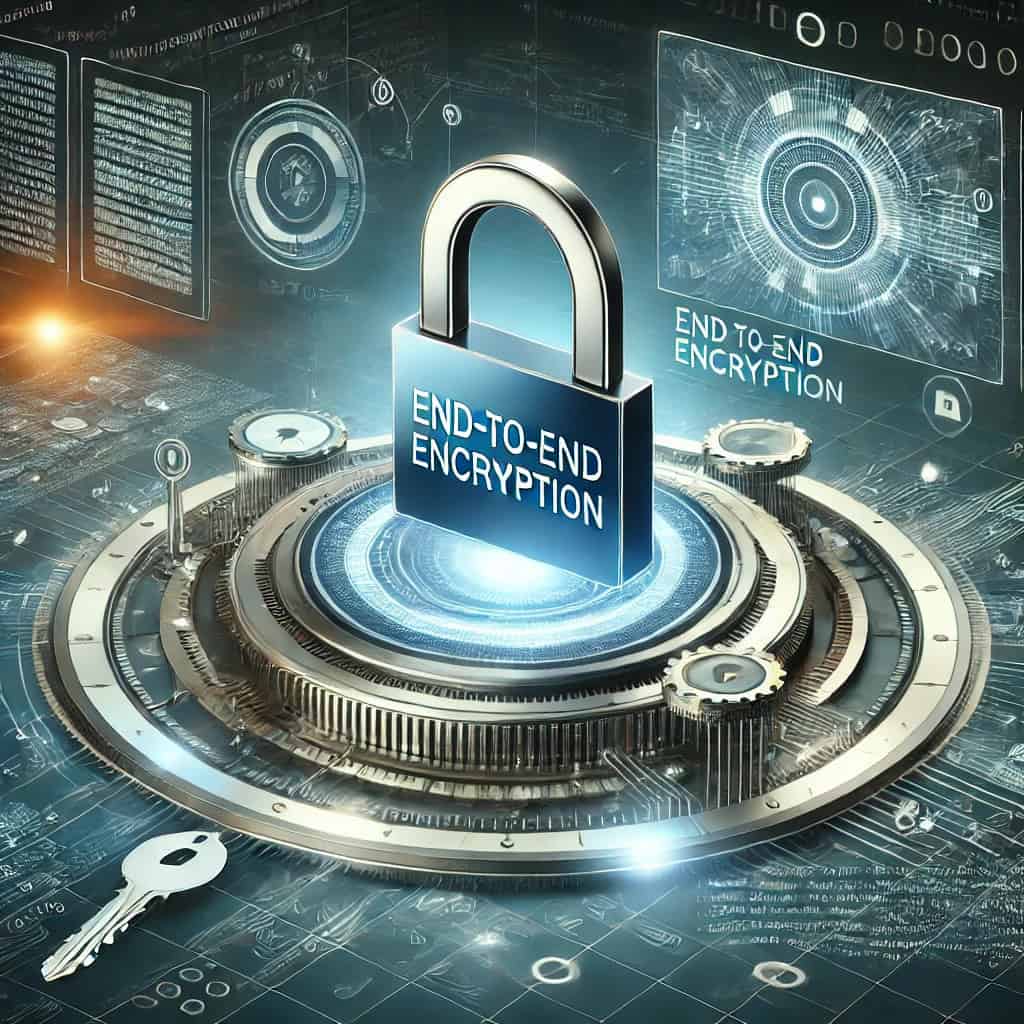
In today’s digital age, securing communication channels has become paramount. With cyber threats on the rise, it’s important to protect sensitive information from unauthorized access. End-to-end encryption (E2EE) stands out as a powerful solution to ensure that messages are only read by the people you’re communicating with. This blog post provides comprehensive guidance on how to secure communication channels using E2EE and discusses its importance, implementation, and best practices.
The importance of securing communication channels

Eavesdropping, data breaches, unauthorized access, and more have become prevalent in our interconnected world. These threats pose significant risks to individual privacy and organizational security. By securing their communication channels, individuals and organizations can protect their sensitive information, maintain confidentiality, and build trust.
What is end-to-end encryption?
End-to-end encryption (E2EE) is a secure communication method that prevents third parties from accessing data while it is being transmitted from one end system to another. In E2EE, data is encrypted on the sender’s device and decrypted only on the receiver’s device, making it unreadable by intermediaries such as ISPs or service providers.
Benefits of end-to-end encryption
E2EE offers several key benefits, including
- Privacy: Ensure that only the intended recipients can read your messages.
- Data integrity: Prevents unauthorized alteration of communications.
- Build trust: Increase user trust by protecting sensitive information.
- Compliance: Helps you meet regulatory requirements for data protection.
In this guide, you’ll learn how to implement E2EE, the tools and protocols involved, and best practices for maintaining secure communication channels.
Understanding the basics of end-to-end encryption

End-to-end encryption works by using encryption keys to encrypt and decrypt messages. When a message is sent, it is encrypted with a public key and can only be decrypted with the corresponding private key held by the recipient. This process keeps the message unreadable to anyone who intercepts it in transit.
Implementing end-to-end encryption
To implement E2EE, follow these steps
- Choose the right encryption protocol: Select the right protocol for your communication needs, such as Transport Layer Security (TLS), Secure Sockets Layer (SSL), or a specific E2EE protocol, such as a signaling protocol.
- Generate encryption keys: Create public and private keys for all parties involved in the communication.
- Message encryption: Encrypt the message using the recipient’s public key before sending it.
- Message decryption: The recipient uses the private key to decrypt the received message.
- Update keys regularly: Regenerate keys periodically for added security.
Tools and applications that support end-to-end encryption
Many tools and applications support E2EE, making it easy to secure communications:
- Messaging apps: Signal, WhatsApp, and Telegram have built-in E2EE for text, voice, and video calls.
- Email services: ProtonMail and Tutanota provide secure email services with E2EE.
- File Storage: Ensure encrypted file storage and sharing with Sync and Tresorit.
- Web browsers: Browsers with built-in HTTPS support, such as Firefox and Chrome, provide secure web communications.
Best practices for maintaining secure communication channels
- Update software regularly: Ensure all software and applications are up-to-date to protect against vulnerabilities.
- Use a strong password: Combine uppercase and lowercase letters, numbers, and special characters.
- Enable two-factor authentication (2FA): Add a layer of security to your account.
- User education: Educate employees and users about the importance of encryption and how to use it effectively.
- Monitoring and audit communications: Regularly check for suspicious activity and ensure compliance with security policies.
Common challenges and solutions
- Key management: Securely storing and managing cryptographic keys can be challenging. Use a dedicated key management service or hardware security module (HSM).
- Performance impact: Encryption can slow down communication. Optimize performance by choosing efficient algorithms and regularly updating hardware.
- User adoption: Users may find the encryption process cumbersome. Simplify the user experience with an intuitive interface and automated processes.
- Interoperability issues: Different systems might have compatibility issues. Ensure that all systems and applications use standardized protocols.
| Steps | Action |
|---|---|
| Select a protocol | Choosing the right encryption protocol |
| Generate a key | Create public and private keys |
| Message encryption | Use the recipient’s public key for encryption |
| Decrypting messages | The recipient uses the private key for decryption |
| Update keys regularly | Regenerate encryption keys periodically |
Conclusion
Securing communication channels using end-to-end encryption is essential in today’s digital environment. E2EE prevents eavesdropping and unauthorized access by ensuring that only the intended recipients have access to transmitted data. Implementing E2EE requires choosing the right protocol, generating and managing encryption keys, and using applications that support encryption. By following best practices and addressing common issues, your communications will be more secure.
Integrating E2EE into your communications strategy not only protects sensitive information, but also promotes trust and compliance with regulatory standards. By following this guide, you can effectively implement and maintain secure communication channels to ensure that data remains confidential and uncompromised.
FAQ
What are the main benefits of using E2EE?
The main advantage of E2EE is that it prevents eavesdropping and unauthorized access by ensuring that messages are read only by the people with whom they are communicating.
Can I use E2EE for all types of communications?
Yes, E2EE can be applied to many forms of communication, including text, voice calls, video calls, email, file storage, and more.
How often do I need to update my encryption keys?
To maintain a high level of security, we recommend updating your secret key periodically, every few months.
Resources
- Cyberlutions. Securing Communication Channels from Eavesdropping Using End-to-End Encryption.
- SSL2BUY. End-to-End Encryption (E2EE).
- GlobalSign. How End-to-End Encryption (E2EE) Works.
- Howset. Implementing End-to-End Encryption in Messaging Apps.
- The Sagenext. What Is End-to-End Encryption?.
